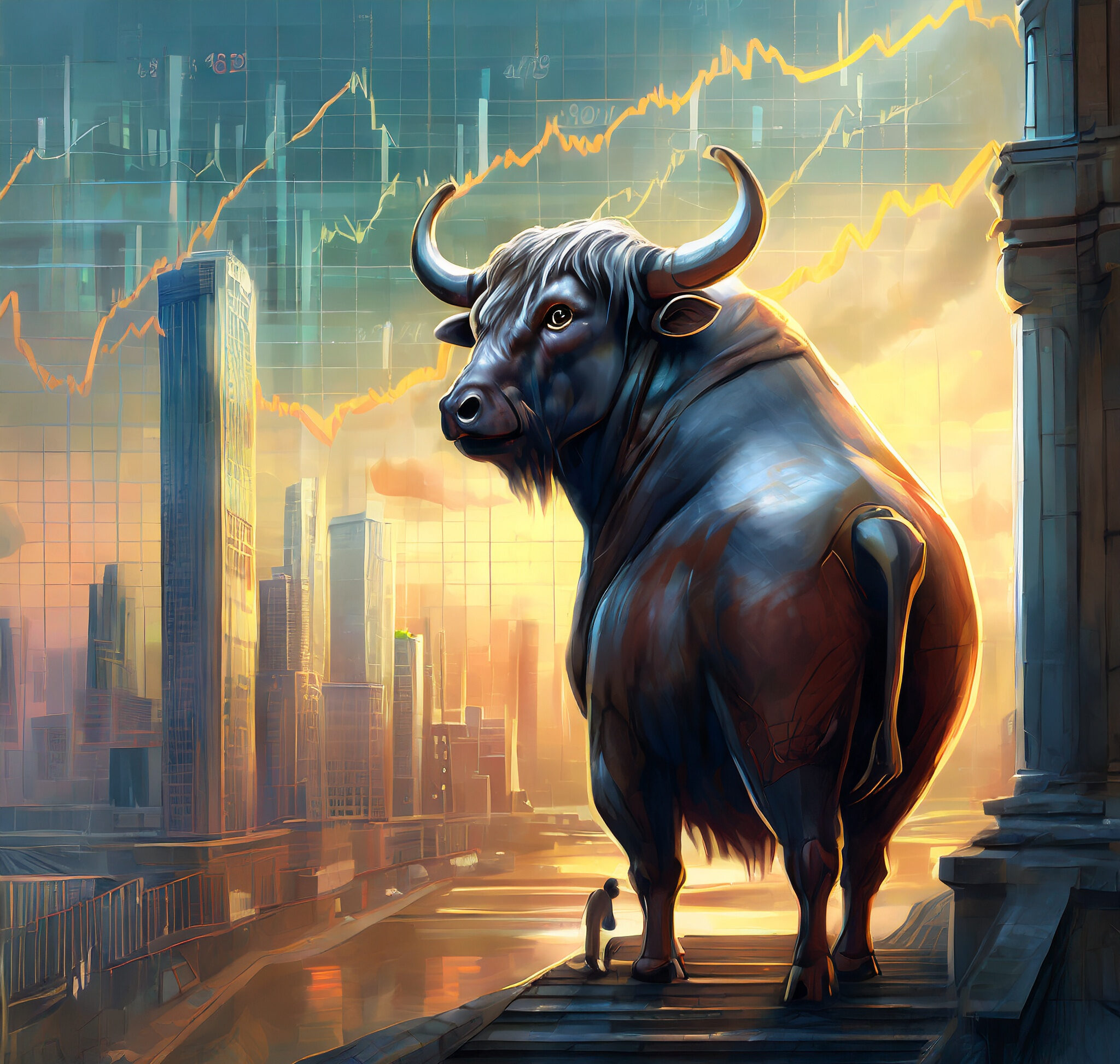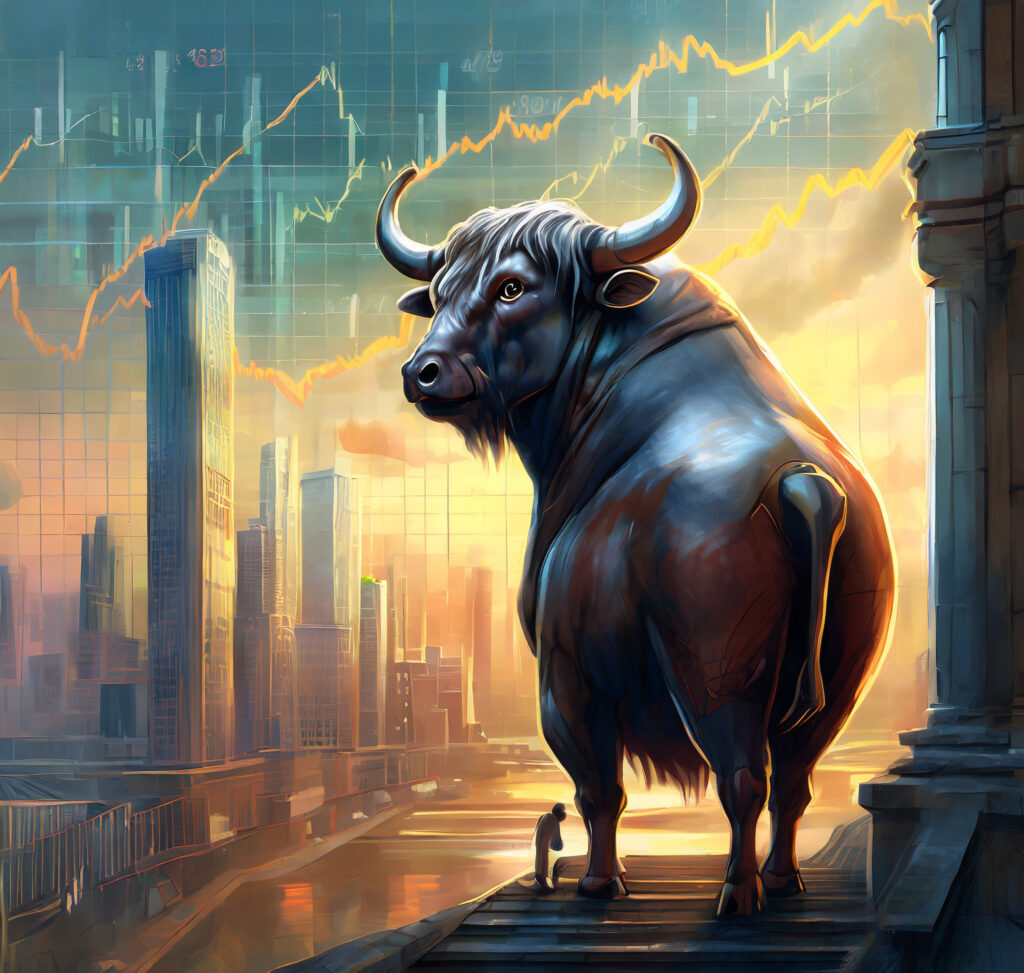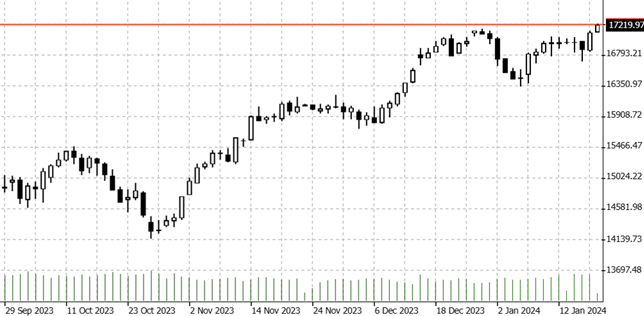

19.01.2024 – A strong statement from Wall Street: the Nasdaq 100 has reached a new high. A whole bunch of smaller news items boosted share prices. Above all, the hope of a Goldilocks situation created a buying mood: lower interest rates with a strong economy.
The new year begins with a new peak – the Nasdaq 100 has produced a nice rally. Here is the daily chart.

Source: Bernstein Bank GmbH
Let’s take a look at the background. Firstly, there was positive news for the two Nasdaq heavyweights Nvidia and Apple. The most important supplier Taiwan Semiconductor announced a return to solid growth.
Soft landing
In addition, the lockdown in the US was averted for the time being – and, as always, at the last minute. There had been a dispute in the US Congress since September. Now the two chambers of parliament are once again voting in favour of a temporary budget solution.
Hopes of a soft landing for the US economy also increased – fears of a recession receded. The number of new weekly applications for unemployment benefits fell to a 16-month low. Unemployment claims slipped by 16,000 to 187,000; most forecasts had put the figure at 205,000.
In addition, new housing starts in December were stronger than expected. Specifically, they fell by 4.3 per cent month-on-month to 1.46 million – the forecast had only been 1.425 million. The property market is therefore proving to be relatively robust, although the decline does not indicate overheating. The home ownership situation and demand for mortgages in particular has been a permanent factor in higher interest rates under the central bank’s hawks.
Interest rate cut ahead
The head of the Atlanta Fed, Raphael Bostic, meanwhile, explained that he expects the Federal Reserve to cut interest rates from the third quarter onwards. According to Barchart.com, the market only believes that the key interest rate will remain unchanged for the time being: only 3 per cent of players see a rate cut of 25 basis points at the end of January. However, 56 per cent already expect this for the following meeting in March.
As the Federal Reserve has already signalled an end to tightening anyway, the chances of a win-win scenario for the bulls have increased: Lower interest rates and an economy running at full speed – falling borrowing costs for high-tech companies, many of which are still living on credit, and the prospect of rising profits. A Goldilocks scenario. We are excited to see what happens next – Bernstein Bank wishes you successful trades and investments!
__________________________________________________________________________________________________________________________________________________________
The content of this publication is for general information purposes only. In this context, it is neither an individual investment recommendation or advice nor an offer to purchase or sell securities or other financial products. The content in question and all the information contained therein do not in any way replace individual investor- or investment-oriented advice. No reliable forecast or indication for the future is possible with respect to any presentation or information on the present or past performance of the relevant underlying assets. All information and data presented in this publication are based on reliable sources. However, Bernstein Bank does not guarantee that the information and data contained in this publication is up-to-date, correct and complete. Securities traded on the financial markets are subject to price fluctuations. A contract for difference (CFD) is also a financial instrument with leverage effect. Against this backdrop, CFD trading involves a high risk up to the point of total loss and may not be suitable for all investors. Therefore, make sure that you have fully understood all the correlating risks. If necessary, ask for independent advice. CFDs are complex instruments and are associated with the high risk of losing money quickly because of the leverage effect. 68% of retail investor accounts lose money trading CFD with this provider. You should consider whether you understand how CFD work and whether you can afford to take the high risk of losing your money.7
